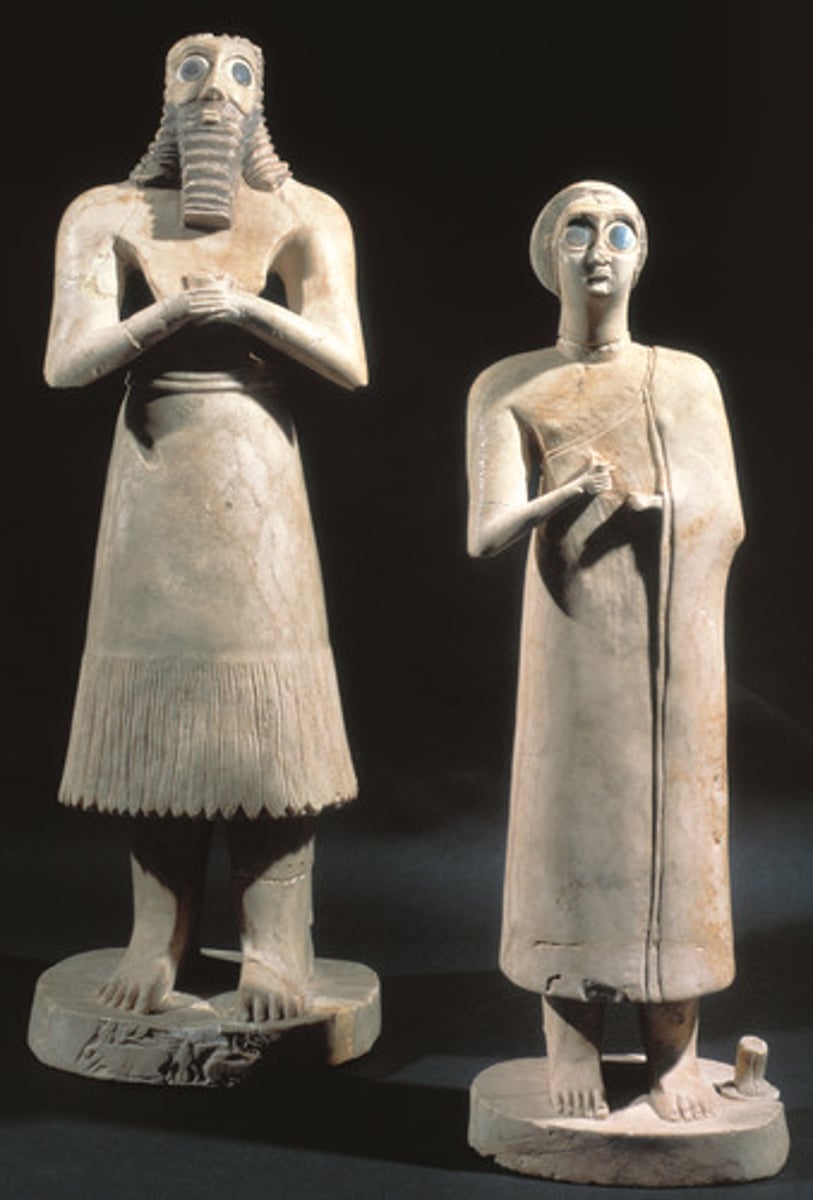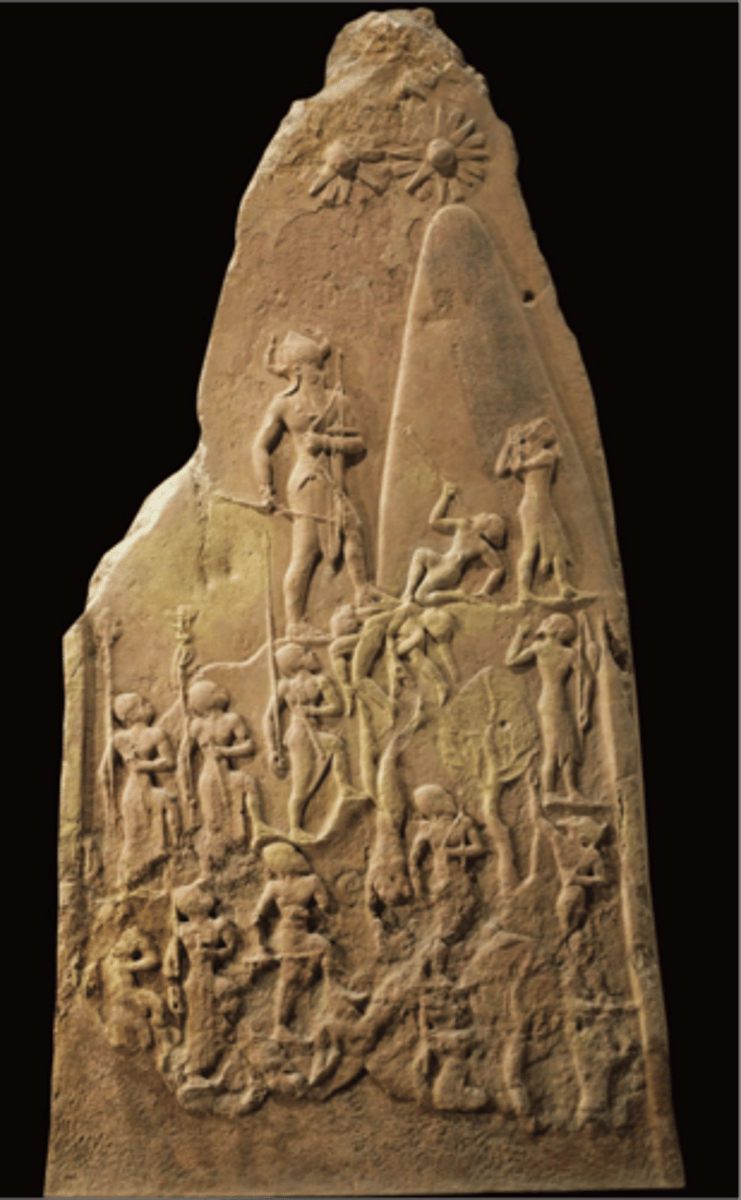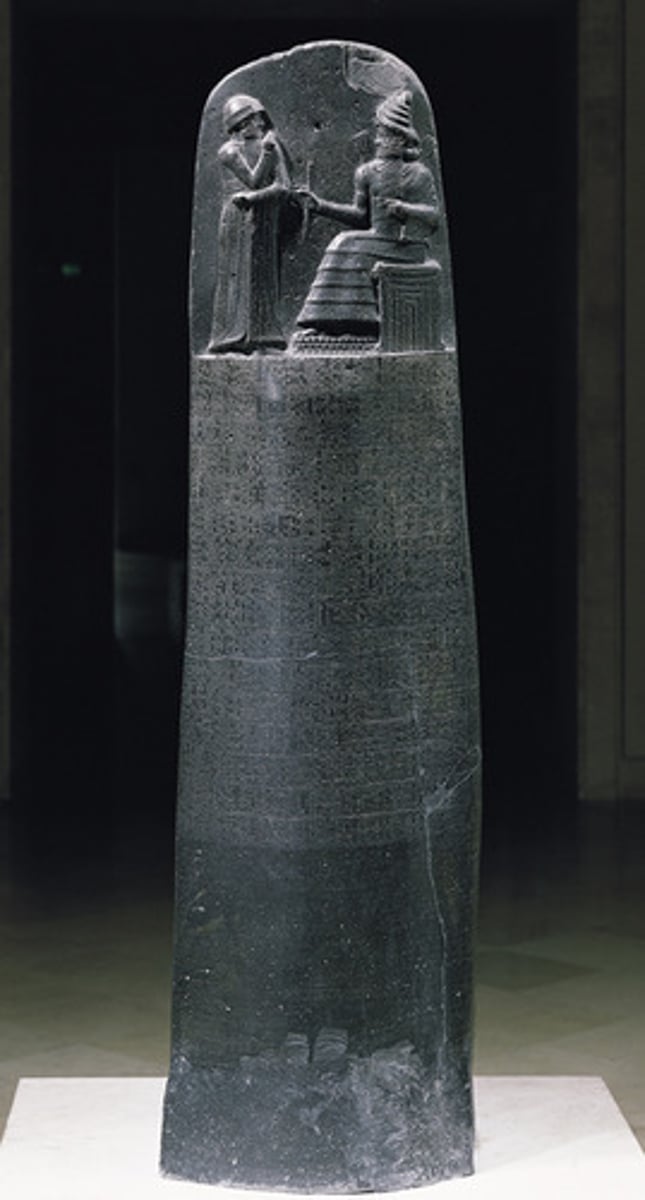ANCIENT MESOPOTAMIA AND PERSIA ca. 3000 to 2000 BCE
1/3
There's no tags or description
Looks like no tags are added yet.
Name | Mastery | Learn | Test | Matching | Spaced |
|---|
No study sessions yet.
4 Terms

Statuettes of Two Worshippers, gypsum, limestone, from square temple at eshnunna, iraq
-Both statues are in a gesture of prayer, symbolizing them waiting for divinity to appear, hoping the God will bring them good fortune
-They are a family (Father, Wife, Half of a Child)
-Trying to trick the gods by getting the statues, which all looked similar, then putting it in the temple, have it stamped with the families name or persons name
-The purpose of this was to show the God that you're in eternal wakefulness, also signified by their wide open eyes
-Statues are also quite short, massive ankles

Head of Man (Known as an an Akkadian Ruler), cast copper alloy, from Ninevah (modern Kuyunjik), Iraq, c. 2300-2200 BCE
Notes
Patron/Reason for making
-Person it was made for was probably wealthy -Statue made to honor an akkadian ruler
Materials
-Chose certain durable materials to last a long time -Made of cast metal -Casting in bronze was complicated, required original clay, plaster casts,
Proportions/Facial features
-Realistic proportions, face -Stylized -Beard is rendered in perfect braids, also eyebrows
Gauging eyes
-Gouging the eye was meant to indicate that he was removed from power or memory of others

Victory Stele of Naram-Sin, from Susa, Iraq, 2254-2218 BCE
Was damaged, originally much larger
Color somewhat got drowned over time, pink limestone, which pyramids were made out of
Stele a large stone of which a steel something was made to commemorate something
Lasts forever and it is true
Gotta be wealthy and powerful to have one
Setting: mountanous area, used underlating lines on different tiers to represent the rocky terrain
Trees are represented as squiggles with leaves
Artist is using conventional forms for organic things (trees,leaves)
Shown as dominante by being the biggest and on the highest point of the mountain, standing in front of people bowing down to him
Somewhat of a crown on him, differentiates by having two horns that resemble bull horns
All figures are below the king, on the right the warriors as identical, cookie cutter, to show the kings army and are following his steps, his warriors are moving up as well (conquering)
Propaganda, made to show the king as victorious/powerful, that the divine wanted them to do it

Stele of Hammurabi, from Susa, Iran, c. 1792-1750 BCE
Commemorates Hammurabis laws, shamish gods above gave him the right to state
Made the abstract tangible on dark stone, basalt, 7ft4in by writing them into the stone, "An eye for an eye"
Have a pictorial image to visualize how Hammurabi got destined by the god of Shamish to create the laws
Person who made it had to fufill what hammurabi wanted, making the laws official
Within the composition, both figures are taking equal space
The god is actually bigger, just he is sitting
Facing one another, communicating, god handing an object to Hammurabi to signify giving order